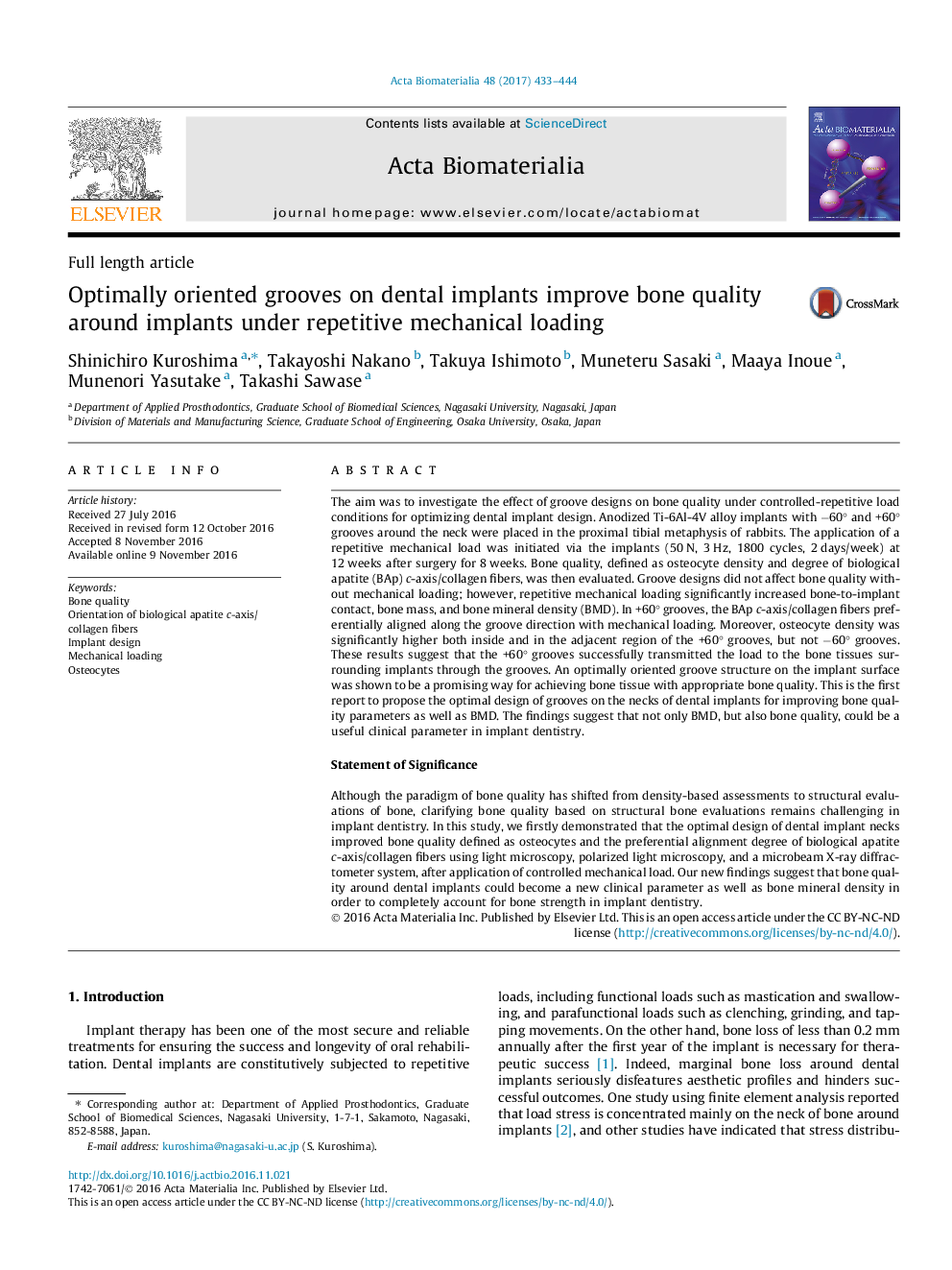| کد مقاله | کد نشریه | سال انتشار | مقاله انگلیسی | نسخه تمام متن |
|---|---|---|---|---|
| 6449942 | 1415938 | 2017 | 12 صفحه PDF | دانلود رایگان |
The aim was to investigate the effect of groove designs on bone quality under controlled-repetitive load conditions for optimizing dental implant design. Anodized Ti-6Al-4V alloy implants with â60° and +60° grooves around the neck were placed in the proximal tibial metaphysis of rabbits. The application of a repetitive mechanical load was initiated via the implants (50 N, 3 Hz, 1800 cycles, 2 days/week) at 12 weeks after surgery for 8 weeks. Bone quality, defined as osteocyte density and degree of biological apatite (BAp) c-axis/collagen fibers, was then evaluated. Groove designs did not affect bone quality without mechanical loading; however, repetitive mechanical loading significantly increased bone-to-implant contact, bone mass, and bone mineral density (BMD). In +60° grooves, the BAp c-axis/collagen fibers preferentially aligned along the groove direction with mechanical loading. Moreover, osteocyte density was significantly higher both inside and in the adjacent region of the +60° grooves, but not â60° grooves. These results suggest that the +60° grooves successfully transmitted the load to the bone tissues surrounding implants through the grooves. An optimally oriented groove structure on the implant surface was shown to be a promising way for achieving bone tissue with appropriate bone quality. This is the first report to propose the optimal design of grooves on the necks of dental implants for improving bone quality parameters as well as BMD. The findings suggest that not only BMD, but also bone quality, could be a useful clinical parameter in implant dentistry.Statement of SignificanceAlthough the paradigm of bone quality has shifted from density-based assessments to structural evaluations of bone, clarifying bone quality based on structural bone evaluations remains challenging in implant dentistry. In this study, we firstly demonstrated that the optimal design of dental implant necks improved bone quality defined as osteocytes and the preferential alignment degree of biological apatite c-axis/collagen fibers using light microscopy, polarized light microscopy, and a microbeam X-ray diffractometer system, after application of controlled mechanical load. Our new findings suggest that bone quality around dental implants could become a new clinical parameter as well as bone mineral density in order to completely account for bone strength in implant dentistry.
218
Journal: Acta Biomaterialia - Volume 48, 15 January 2017, Pages 433-444
